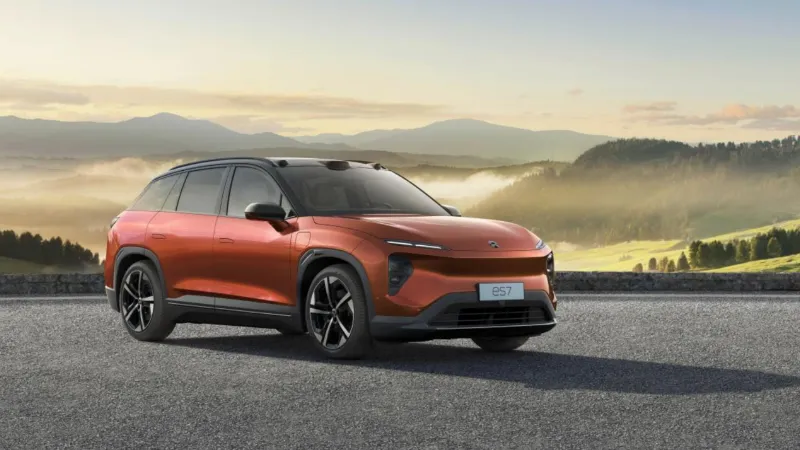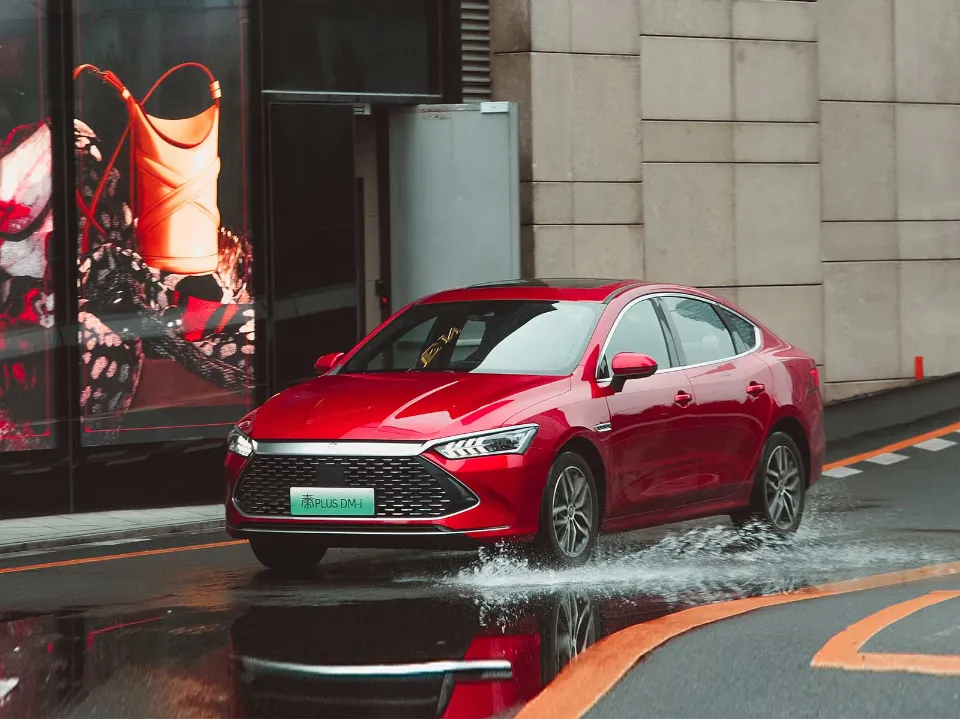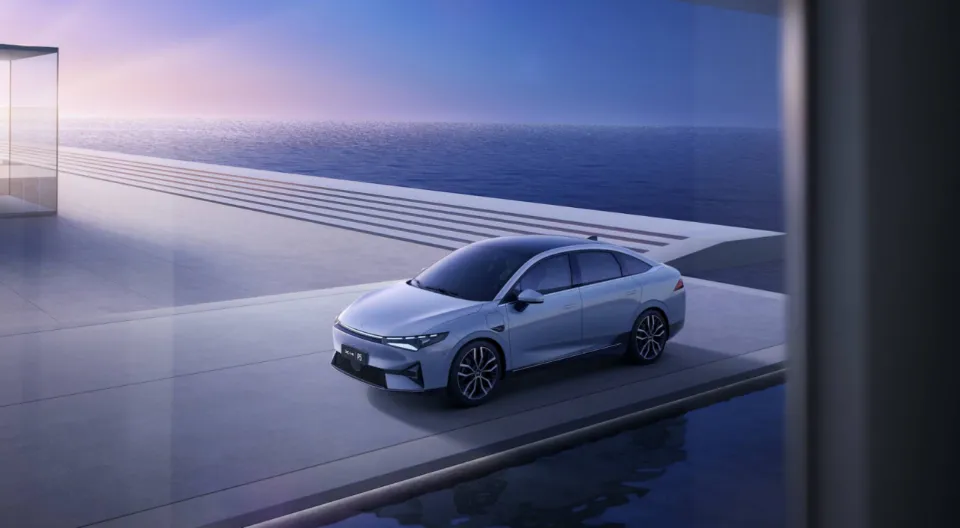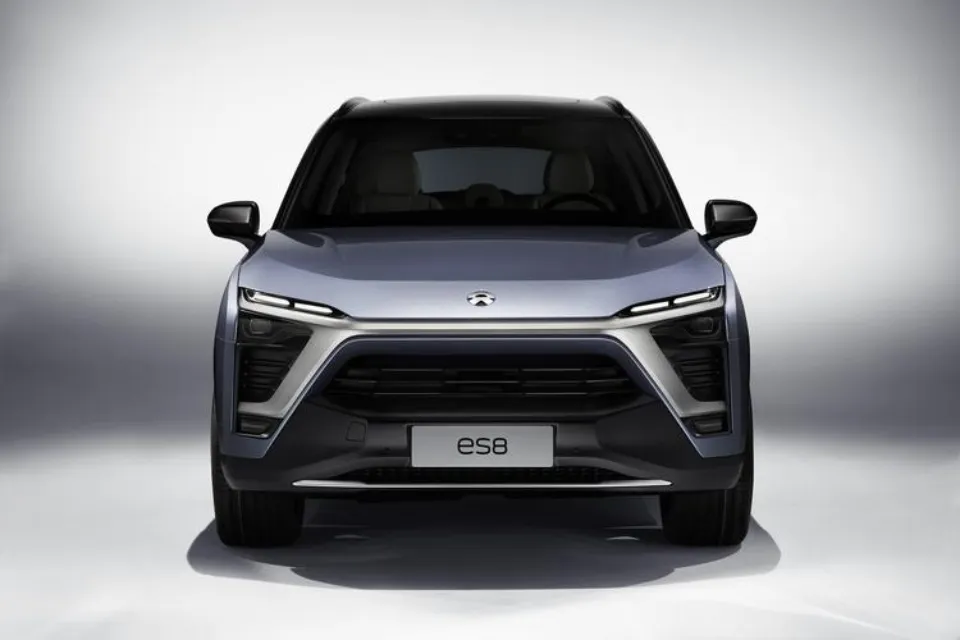On March 1, NIO announced its 2022 financial report, with a net loss of 14.437 billion yuan in 2022, breaking the momentum of gradually narrowing losses in the past two years, and the market believes that it seems to return to the dilemma of being in the ICU in 2019. In comparison, Li Auto’s loss of 2.03 billion yuan is almost negligible.
Gross margins have been cut, expenses have been further increased, and cash reserves have fallen sharply… NIO’s sustainability began to face widespread doubts, and the capital market reacted more directly, with U.S. stocks closing down 5.96% on March 1. It closed at $8.83, a new low since the second half of 2020.
Both Li Bin and NIO are under a lot of pressure.
But at the same time as the huge loss, NIO is constantly increasing its weight. Recently, NIO announced that it will add 1,000 replacement stations this year in order to cover more markets in third- and fourth-tier cities, Li Bin believes that in addition to the first-tier market, there is more market space to expand, and the construction of charging and swapping systems is providing support for NIO to sell cars.
In addition, CaiLian News reported that NIO’s new plant is located in Chuzhou, Anhui Province, and will put into production NIO’s third brand Firefly. Different from the high-end positioning of the NIO brand, Firefly focuses on low-end models, and the price range may be within 100,000 yuan ~ 200,000 yuan, or even 100,000 yuan.
At this time, if combined with the construction plan of the replacement station just mentioned, it seems that NIO’s sinking ambition can be found. Around this phenomenon, this article attempts to answer the following three questions:
1. Why are car companies obsessed with the sinking market?
2. NIO, which starts from the mid-to-high-end market, “goes down”, the advantages outweigh the disadvantages?
3. Is the sinking market a fat piece for the new force car companies?
Compete for the sinking market
In the “Insight Report on the Consumption Behavior of New Energy Vehicle Users in the Sinking Market”, the user portraits, purchase behaviors and consumption trends of new energy vehicles in third-tier cities and below are studied and analyzed.
The report pointed out that the proportion of new energy vehicles selected by users in the sinking market is higher than that in first- and second-tier cities, and compared with the attention of users in first- and second-tier cities to exterior interiors and cutting-edge technology, users in the sinking market are more concerned about parameter configuration and model price, and have a higher preference for models below 150,000 yuan.
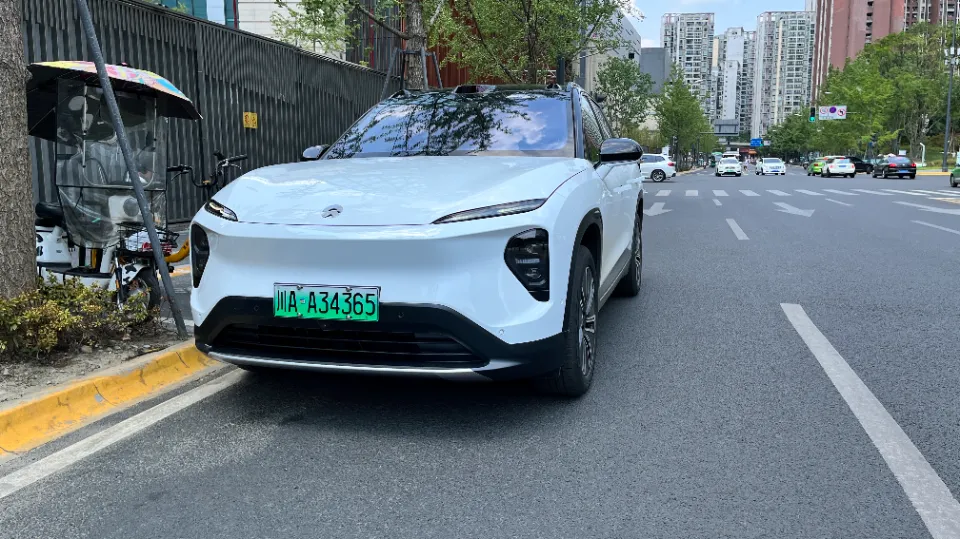
The proportion of population in the sinking market
Zhang Yongwei, secretary-general of the China Electric Vehicle 100 Association, made it clear that the new energy vehicle market will accelerate in 2023, and the proportion of sales in second- and third-tier cities and below is expected to exceed 60%.
At the same time, China is also accelerating the construction of new energy vehicle charging facilities, and cities in the third and fourth tiers and below are promoting the increase of charging infrastructure construction by formulating local subsidies and setting charging service fee ceilings. According to the latest data released by the China Charging Alliance, as of October 2022, the cumulative number of charging infrastructure in the country was 4.708 million units, an increase of 109% year-on-year.
From the current market development situation, the third- and fourth-tier markets are likely to be the next incremental space for new energy vehicles, and demand is being released.
Therefore, not only NIO, but also other new car players are eyeing the sinking market.
As early as three years ago, Tesla disclosed the central city settlement plan, covering a total of 45 cities in the four major regions of the east, west, south and north of China, including many low-tier cities such as Yancheng in Jiangsu, Linyi in Shandong, Nanning in Guangxi, and Ganzhou in Jiangxi – which was also interpreted by the outside world as Tesla’s sinking plan.
In March last year, Tesla published an article on its public account entitled “Tesla Village in the Mountains”, describing the story of how Cai Ge, who grew up in Panzhiga Village in Yunnan Province, led the people in the village to change oil trucks with Teslas.
In addition to further increasing the exposure of the original product, Tesla plans to launch a new model that is more accessible to the people, equipped with a more powerful, safe and cheap new battery, and can also be equipped with optional automatic driving assistance functions.
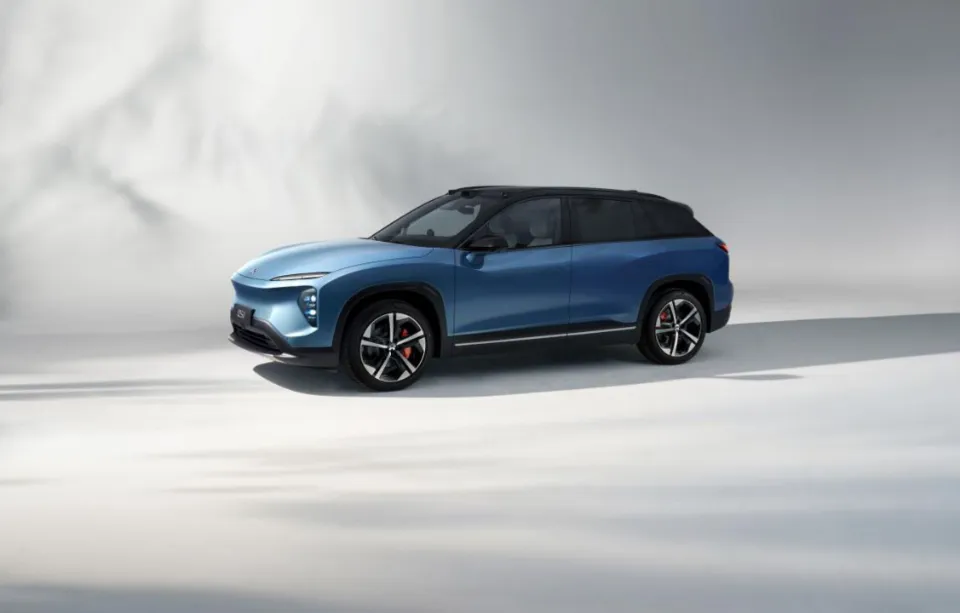
The best implementation of the sinking market is BYD.
Data show that from 2021 to 2022, the proportion of sales of several BYD’s hot-selling models in third-tier cities and below increased from 30% to nearly 40%. As of September 2022, BYD’s stores in third-tier cities and below are about 50%, with nearly 800 stores. With its advantages in cost performance and vehicle cost, BYD is frantically harvesting the growth dividends of the new energy vehicle market.
In addition, Li Xiang, chairman of Li Auto, said that another focus of Li Auto’s work in 2023 is to expand the network layout of third- and fourth-tier cities, and it is expected to add 50 new urban layouts and 150 stores, basically completing the coverage of third-tier cities and above.
Xpeng is also providing cost-effective products to the more mass market. Xpeng P5 has the label of “the world’s first mass-produced lidar smart car”, and the price after subsidies is 15.90,000-223,900 yuan. Xiaopeng’s experience center has also begun to expand to Liuzhou, Luoyang, Weifang and other cities.
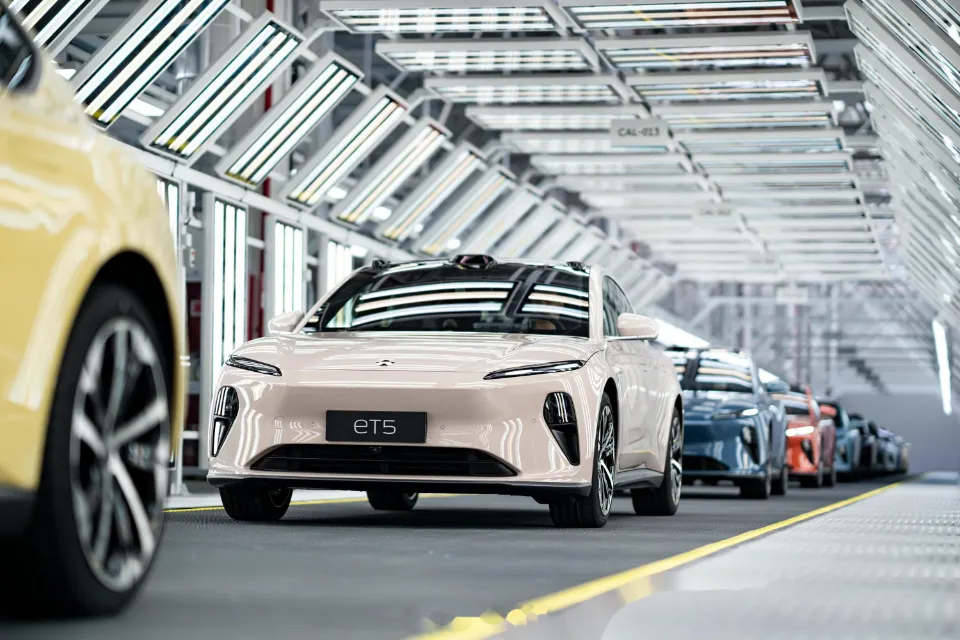
Loaded with Tesla’s heart, leaning towards BYD
However, it is a little regrettable that players seem to be actively deploying, except for BYD, most of them have little effect.
Some research institutions have counted the sales channels of new car manufacturers such as Tesla and Wei Xiaoli and found that their stores are still concentrated in first- and second-tier cities such as Beijing, Shanghai, Guangzhou and Shenzhen, as well as economically developed regions such as the Yangtze River Delta and the Pearl River Delta, and the sales contribution still comes from these central cities.
But one thing is very interesting, today’s new car forces seem to be experiencing a “siege”. Nezha and Zero, which originally developed steadily in the 100,000-200,000 yuan market, are working hard in the high-end market to “gild” the brand; Wei Xiaoli, who is “looking up”, hopes to harvest more users with the help of the sinking market.
From high-end to low-end, there are pros and cons, how should car companies choose? Yu Chengdong, CEO of Huawei’s intelligent vehicle solution BU, once bluntly said in an interview that he would not make a car within 200,000 yuan. But Che Bai Think Tank believes that small and beautiful cannot withstand big waves. For high-end car companies, it should hit the low-end market.
first of all, the high-end market is no longer attractive.
In the era when there were not so many new forces, Wei Xiaoli directly started the road of car manufacturing with the mid-to-high-end market, and passed a relatively bright time, such as Xpeng P7, NIO ES8, ideal ONE These models, all have very good results.
However, Cui Dongshu, secretary general of the Passenger Association, said that in the current domestic new energy vehicle market, sales of models below 200,000 yuan account for more than 50%, and it is expected that the market proportion of models below 200,000 yuan will account for more than 70% in the future. This means that the high-end market where “Wei Xiaoli” is located with a price of more than 200,000 yuan is no longer the fastest growing range.
Taking NIO alone, Li Bin once proudly said that the average selling price of NIO exceeded 400,000 yuan. From another perspective, 400,000 yuan has also become a gap between NIO and the vast majority of users. If NIO wants to further increase its market share, it must enrich its product system, and sinking is an inevitable choice.
Second, the volume of deliveries is an important indicator of capital’s view of new forces.
The logic lies in the fact that the automotive industry has strong economies of scale.British economists Maxi and Silverstone mentioned in their book “The Automotive Industry” that only large-scale mass production of cars can make the price more acceptable to consumers, and then consumers can promote product delivery, and a positive flywheel runs. Capital is also a big fan of this theory, so delivery is their primary consideration.
However, under the premise that high-end tram sales cannot increase rapidly, NIO’s delivery volume is worrying, and it has been forced to give up its top position in delivery volume since 2021.
NIO’s most urgent task at the moment is to find new growth poles.
At this time, the launch of Alps and Firefly sub-brands corresponding to the low-end market may be the key breakthrough for NIO to reverse the situation. If the entry is too late, the market price may be divided by car companies such as BYD and Tesla, and it will be difficult for NIO to get a piece of the pie.
The advantage of the high-end market lies in the profit margin, and the advantage of the low-end market is that it can go volume, and in the event of an economic crisis, it can provide higher risk resistance. Therefore, even with Tesla’s heart, NIO has to rely on BYD.
Fortunately, NIO’s advantages in attacking the sinking market are obvious. For enterprises based on the low-end market, it is extremely difficult to move to the high-end, in turn, high-end car companies sink to the low-end market, but it is much simpler, and price reduction and allocation reduction are common solutions.
In addition, NIO has one more advantage than other car companies, that is, to change the power station. In Xingfu Township, under the jurisdiction of Boxing County, Binzhou City, Shandong Province, NIO has 500 car owners, and the town’s household registration population is only more than 50,000. The reason why so many people are willing to buy NIO is because of the local construction of exchange stations.
When NIO’s charging and swapping stations can be seen everywhere, it is difficult for other brand car companies to replicate.
Grabbing business on someone else’s hill is difficult
The advantages are not small, but the problem of NIO’s entry into the low-end market cannot be ignored, and one of the keys is how much money NIO still has. When NIO went public in Hong Kong in early 2022, it revealed that its cash reserves were about 60 billion yuan, but NIO’s net loss exceeded 10 billion yuan in 2021 and more than 14.4 billion yuan in 2022.
In addition to the losses mentioned at the beginning of the article, as well as the huge investment in the construction of replacement power stations, NIO will continue to increase the size of self-made batteries, successively established a (Shanghai Jiading) laboratory, a (Anhui) company integrating R&D, manufacturing and sales, 400 million yuan in Sunwoda, 12 million Australian dollars to subscribe for 12.6% of the shares of Australian Mining Company (GR). Some time ago, Jianghuai Automobile acquired some of NIO’s assets for 1.704 billion yuan, and many media believed that JAC was assisting NIO.
Secondly, downward derivative models are not technically difficult for NIO, but difficult to build low-cost models is not . And with the decline in raw material prices, the electric vehicle market is very likely to usher in a new round of price reductions, further compressing NIO’s gross margin. At Tesla’s investor day shortly after the break, Musk said its models could cut costs by a further 50 percent. This undoubtedly poses a huge challenge to new local automakers such as Wei Xiaoli.
Moreover, Chebai Think Tank checked the data of new energy vehicle rural activities and found that traditional car companies are the main force worthy of the main force – BYD, Great Wall, SAIC, Jianghuai, Dongfeng, Chery and other traditional old car companies, most of the vehicles are small and mini vehicles with a price of less than 100,000 yuan and a cruising range of less than 300 kilometers.
In 2022, only a few new car brands such as Leap and Hezhong participated in the new energy vehicle rural activities, and “Wei Xiaoli” was all absent. Why is this the case?
Different from traditional fuel vehicles, new energy vehicles put forward higher requirements for the after-sales service capabilities of automobile companies and the construction of local charging pile supporting facilities. Traditional car companies have more scale advantages in production and are more perfect in the construction of channels in the sinking market.
It is undeniable that the sinking market is the next traffic depression, but for most current car manufacturers, it is also a thorny place. Will traditional car companies continue to advance by relying on favorable terrain, or will new forces dive into the battle? It’s still unknown, but it’s already a choice.
Looking back at the price of Tesla Model X that year was nearly one million yuan, firmly standing in the position of a high-end brand, but since 2010, Tesla has been in a state of loss, and even once reached the edge of life and death. It wasn’t until 2016 that Tesla turned to Volkswagen to get out of trouble. Therefore, we may as well give some time to the new domestic car builders.
Source: 腾讯新闻
You may want to know:

